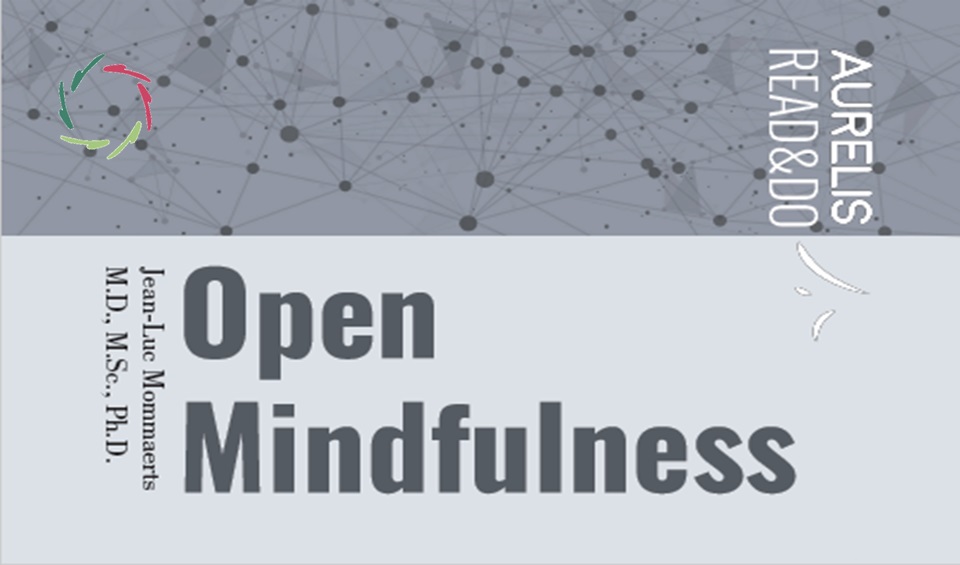Open Mindfulness – Read&Do

This is the foreword to my book ‘Open Mindfulness’ that you can find on Amazon (see menu).
Open attention
‘Open’ attention concerning Open Mindfulness is not just the usual attention with which you could shine on all kinds of things, feelings, and thoughts in a different way from usual. Contrary to this, ‘Open’ attention is indeed a very different form of attention which is Open. The difference is both gradual and essential. Open Mindfulness involves not only consciousness, but also the non-conscious. It’s mainly about what happens in your total self while or even before something is present in your conscious attention, such as an observation before you pin it down by recognizing or naming it. Open Mindfulness takes full account of the mainly non-conscious, subconceptual functioning of brain and mind. The Openness is a characteristic of where the attention comes from, not where it goes to. It comes from you as a total person.
Making this explicitly central is the main difference with many current forms of Mindfulness. Naturally, there is diversity among Mindfulness practitioners in this regard. Open Mindfulness is radically Open. It is one side of this spectrum. This also means that within the world of Mindfulness, there is also the other side of the spectrum. Open Mindfulness is essentially different. If you know ‘Mindfulness,’ this might come as a surprise to you.
Since attention is central to everything you do throughout the day, developing Open attention is also developing yourself. It is about being profound, open to the good, the beautiful, and the natural in what is right in front of you. It is about freedom within yourself. It can feel like you are finally arriving in this world. You don’t have to hold onto this feeling anxiously. It is what you can experience as a ‘life virtuoso’ as well as a possible path for the rest of your life.
Buddhist inspiration
In terms of Buddhist source, Open Mindfulness is based on elements of classical Chinese Chan (from the 6th century AD), itself an inspiration for the Japanese Zen. Central to this is the idea of awakening/opening as profoundly open attention that mainly takes place within everyday life, whether one is a monk, doctor, or shopkeeper. Open Mindfulness also has a strong Western orientation. It integrates modern insights from cognitive science. Interestingly, both come to many overlapping conclusions.
It’s about your life
Open Mindfulness is a radically different way of living. Not evident. One can think “I already do this” and still be completely wrong. One can think “This is so difficult” and be in the middle of it. The meaning of ‘me’ is crucial in this. Is it about the purely conscious, mere ego, or something broader: the total self?
In this sense, Open Mindfulness is quite central to what one could call an ‘AURELIS mindstyle.’ It is congruent with anything else you find in the AURELIS project as a whole. Note that personal freedom is an essential element in this. The aim is not to give people any strict direction except the direction of themselves. This might seem contradictory. In my view, it’s not. But if you feel it this way, then please don’t force yourself. Try to find out what it can mean to you, following a path on which you remain skeptical and open-minded. Open Mindfulness is an experience that can be followed by anyone. It’s mental hygiene. However, to avoid any miscomprehension, anyone with a psychiatric history should seek medical advice beforehand.
If you like, and to guide you on your further path, more than 1000 AURELIS sessions are at your disposal. These all follow the same philosophy. The goal is to see you grow into a person who can be optimally beautiful with integrity and in freedom for the benefit of yourself and others. The aim is for you to be healthy and energetic in order to gain and give meaning to the world in the way you prefer.
Eight sessions
Open Mindfulness is a Read&Do experience of eight ‘sessions’ with:
- insights: of which you should not accept anything if it doesn’t feel right
- exercises: which make the insights practical in feeling and performing, also in your daily life
The eight session trajectory may remind one of regular Mindfulness. Indeed, you can also follow a trajectory in a group of 8 x 2 hours. Due to the combination, there is maximum time for interaction during the meetings. Here, too, the philosophy is open. This is the depth in which you go as far as you wish. Fundamental values are freedom, openness, respect, depth, and trustworthiness.
AURELIS coaching
More support can be obtained from an AURELIS coach. At the same time, this Read&Do experience is also a necessary stepping stone if you want to become an AURELIS coach.
People who want to grow as an AURELIS coach are encouraged to read this Read&Do first. An open conversation follows. It is also advisable to read the two small AURELIS e-books, available on the website www.aurelis.org, before the start of this process.


